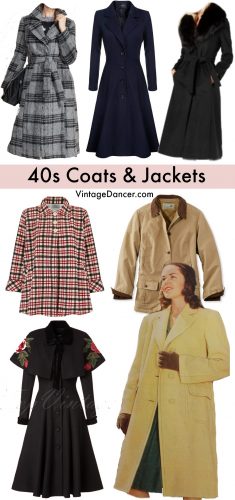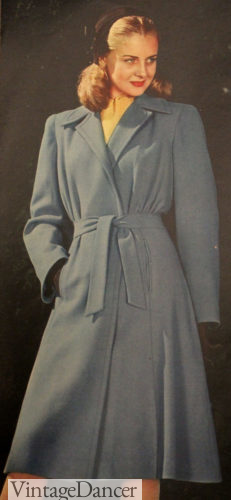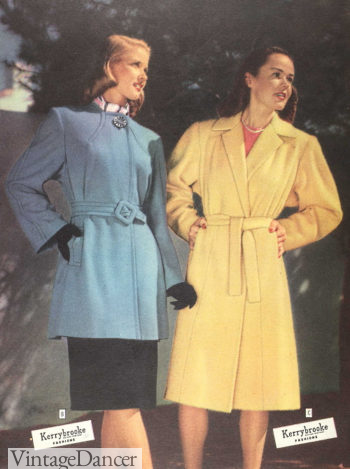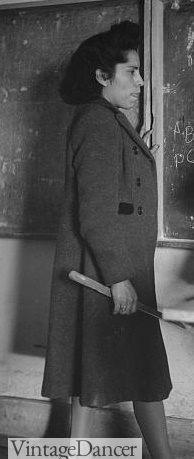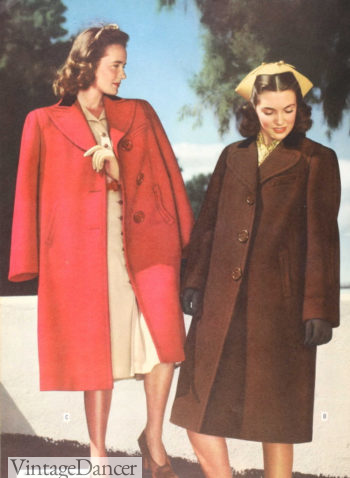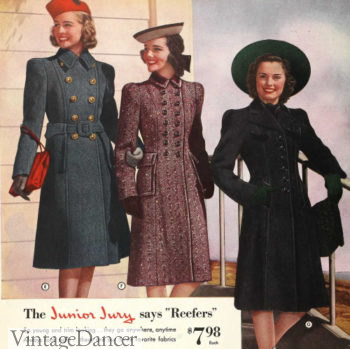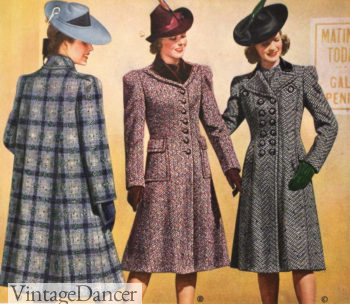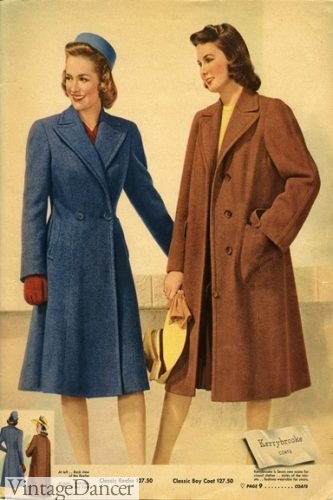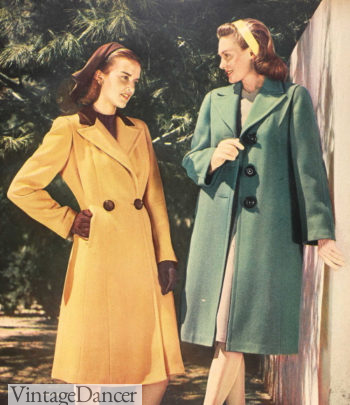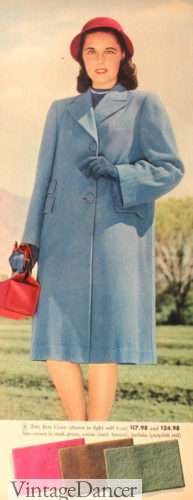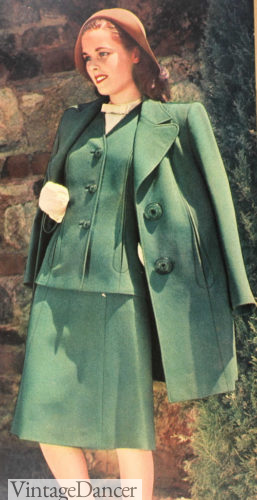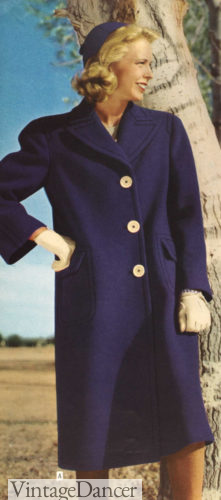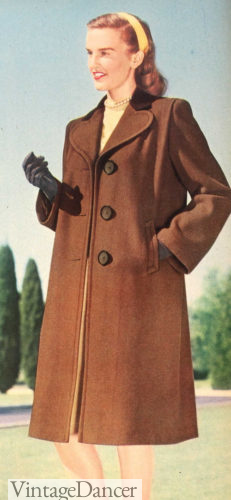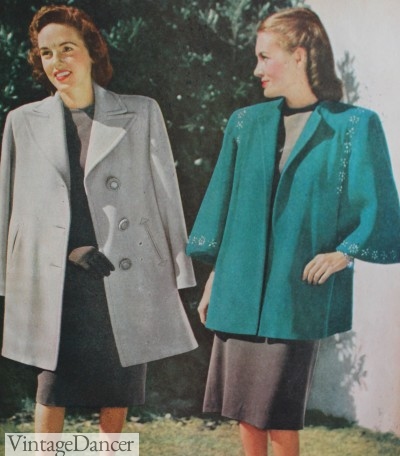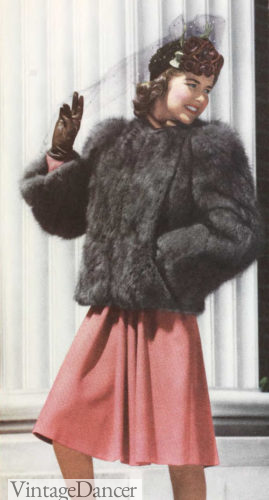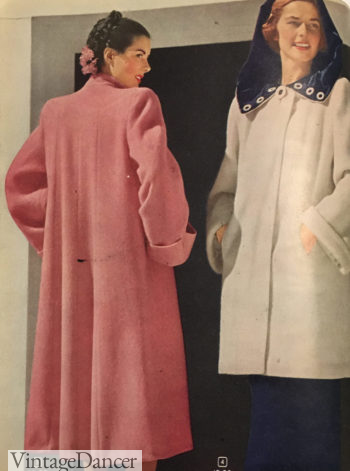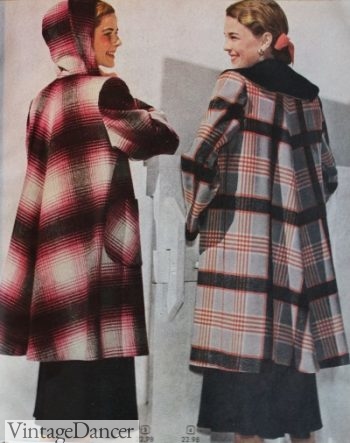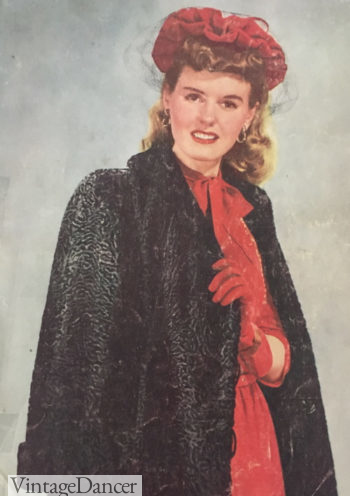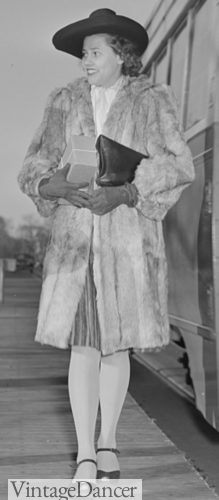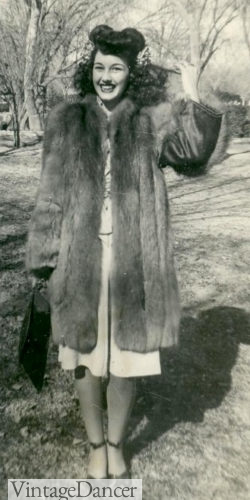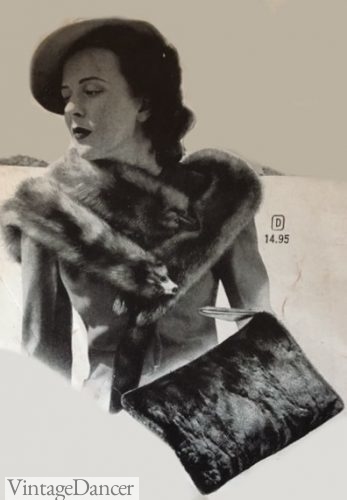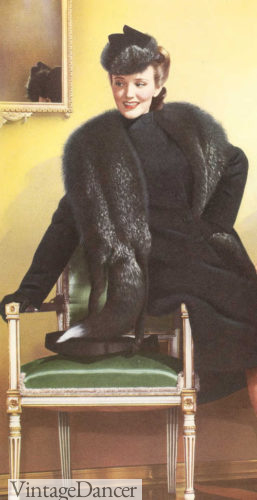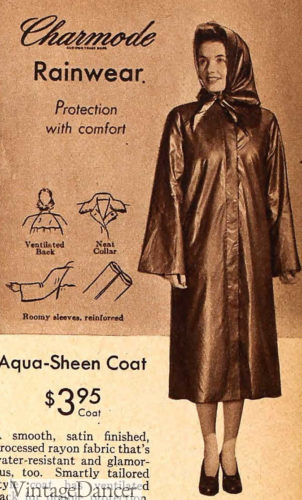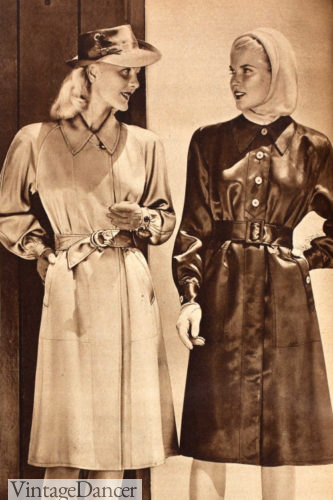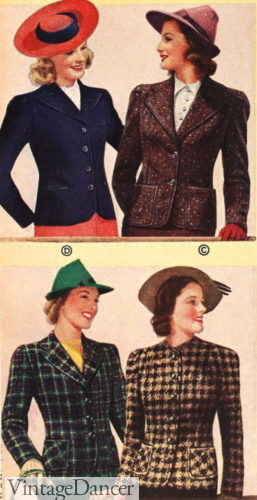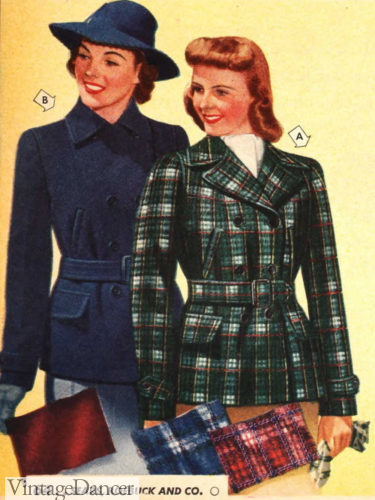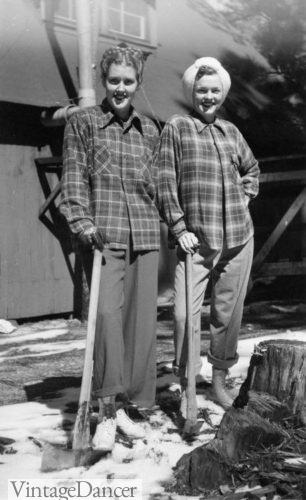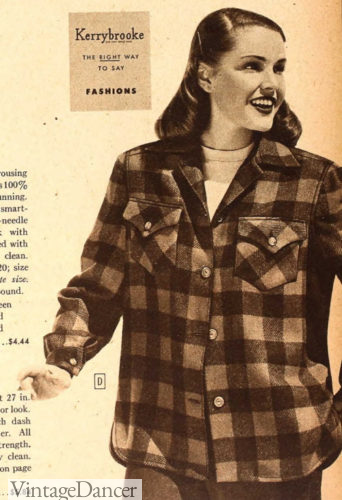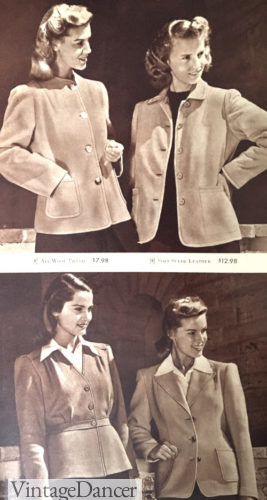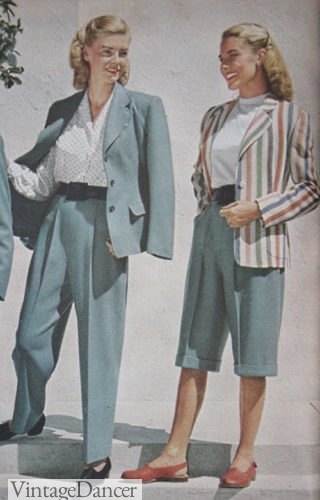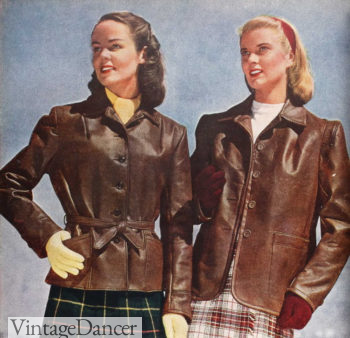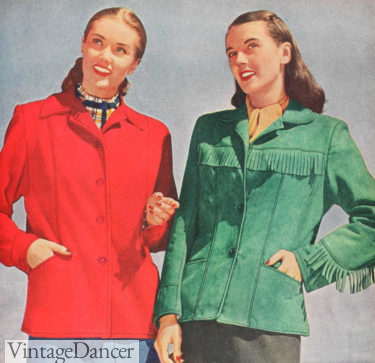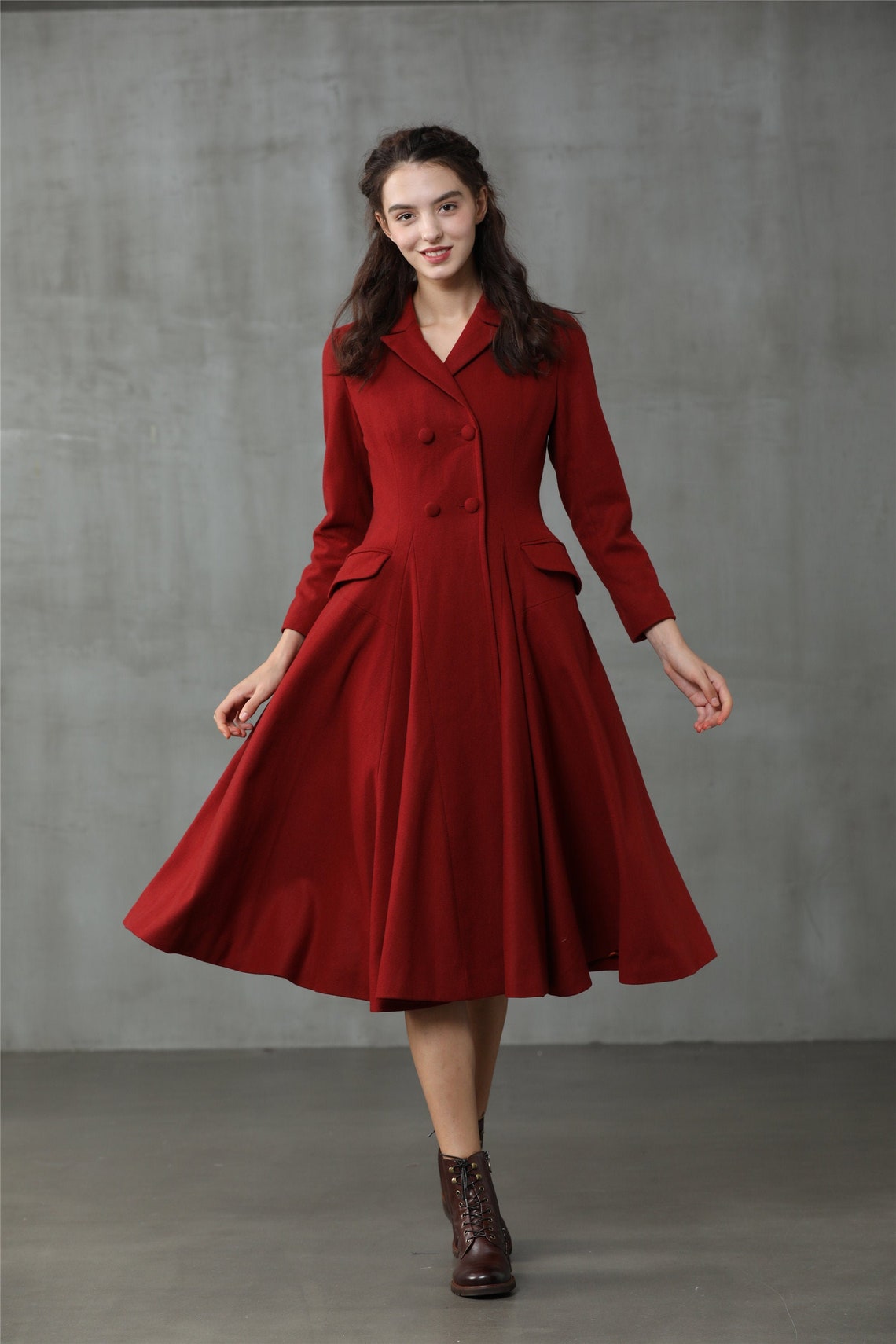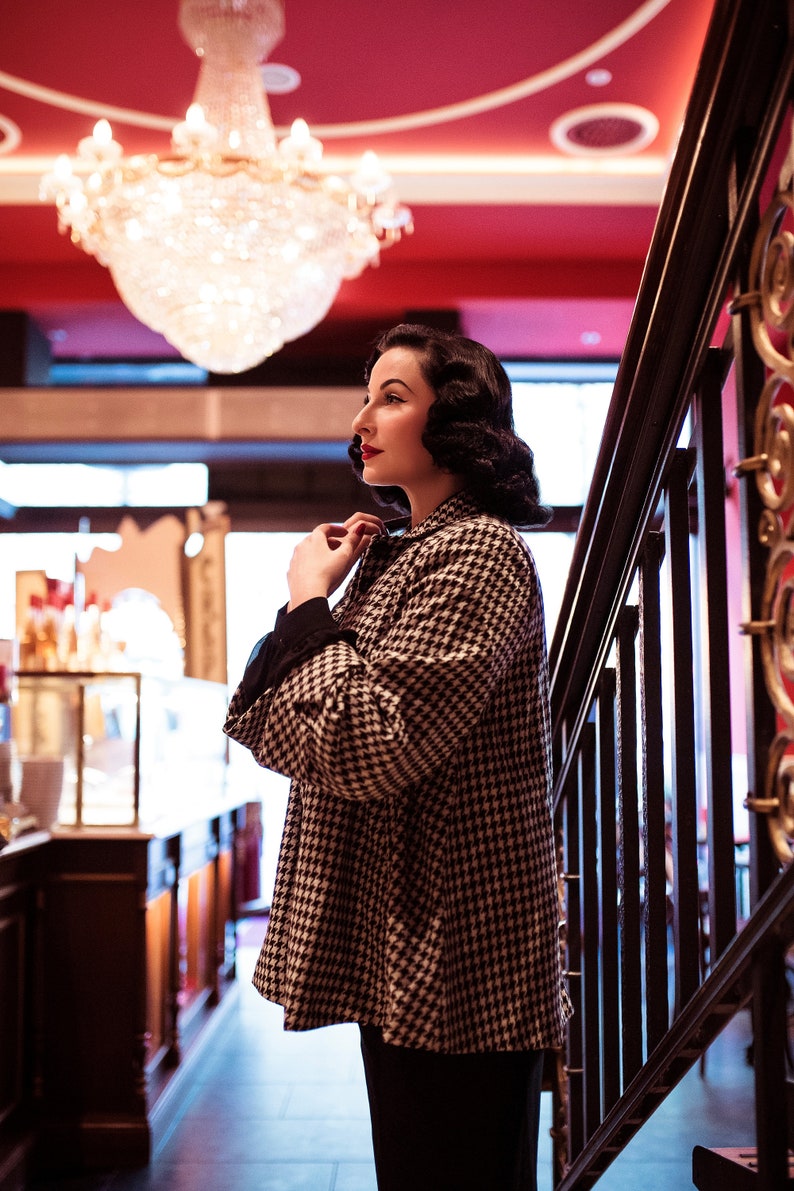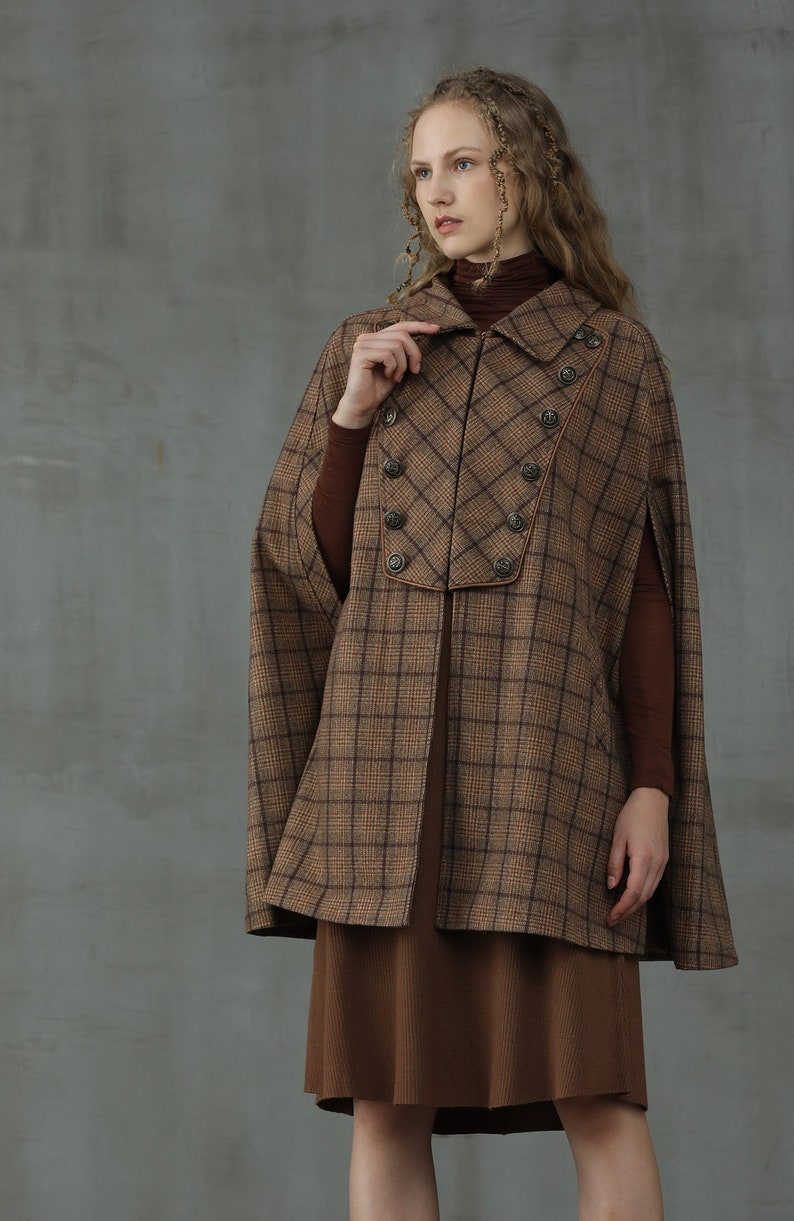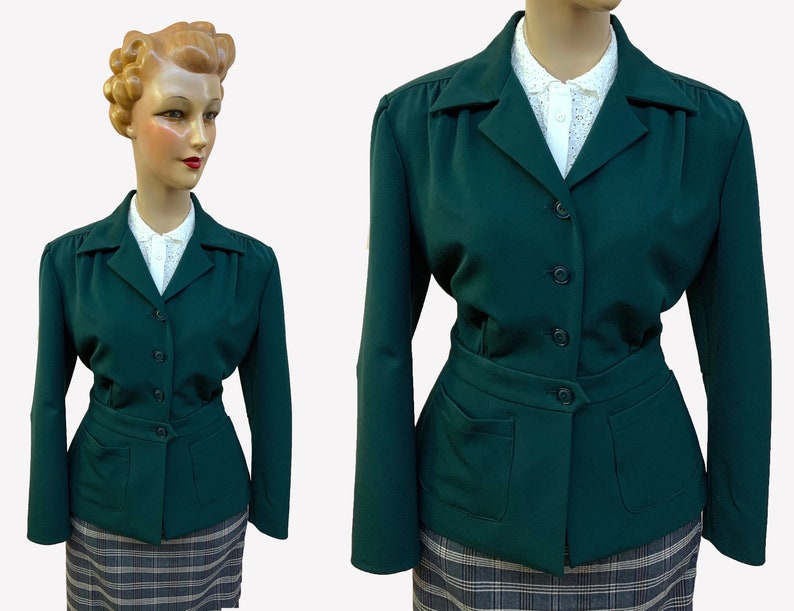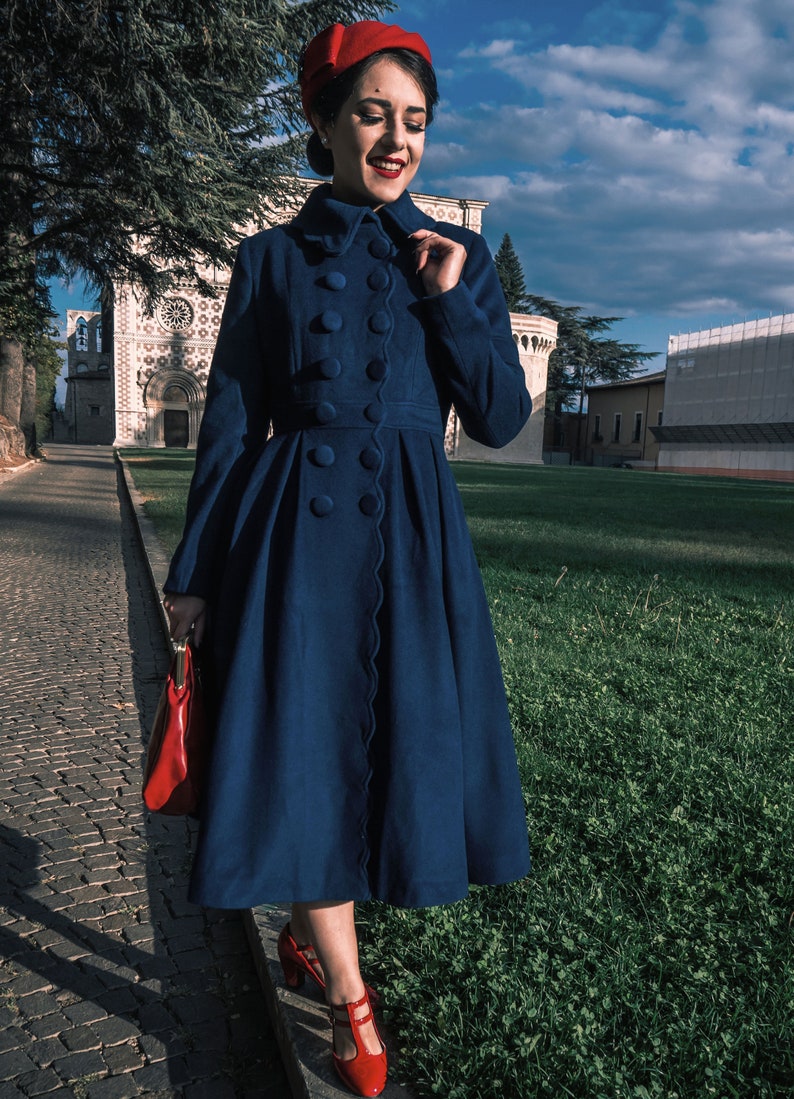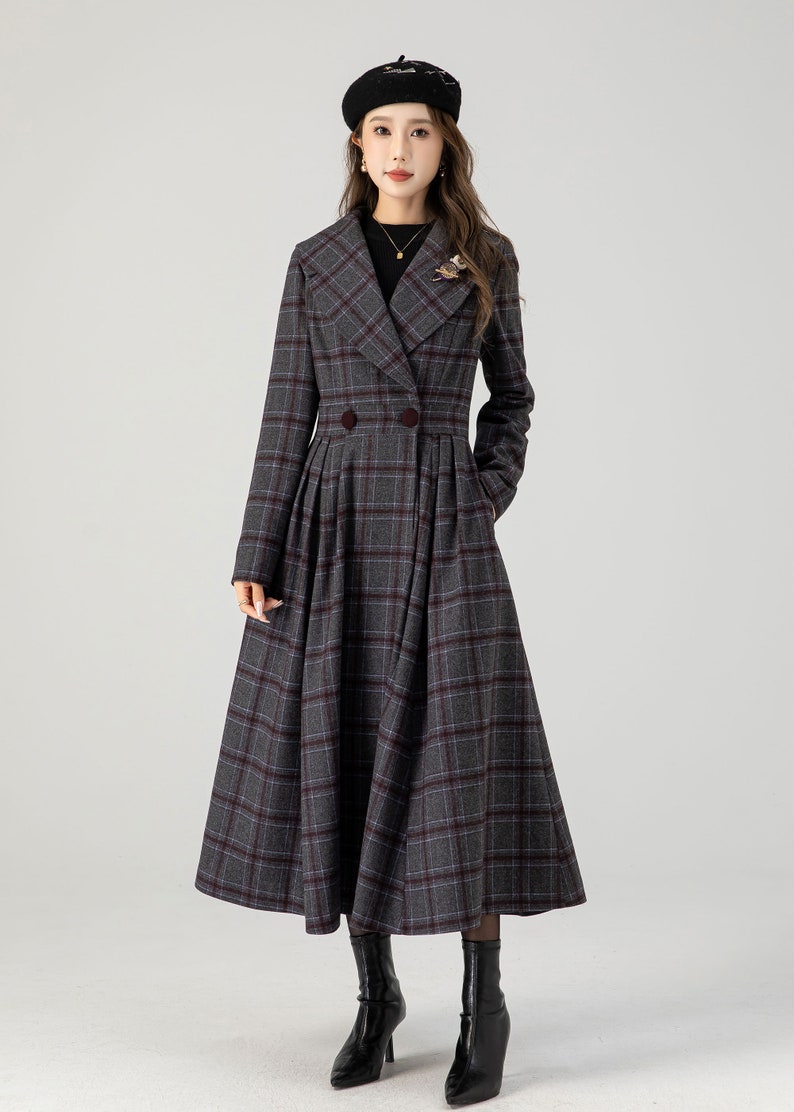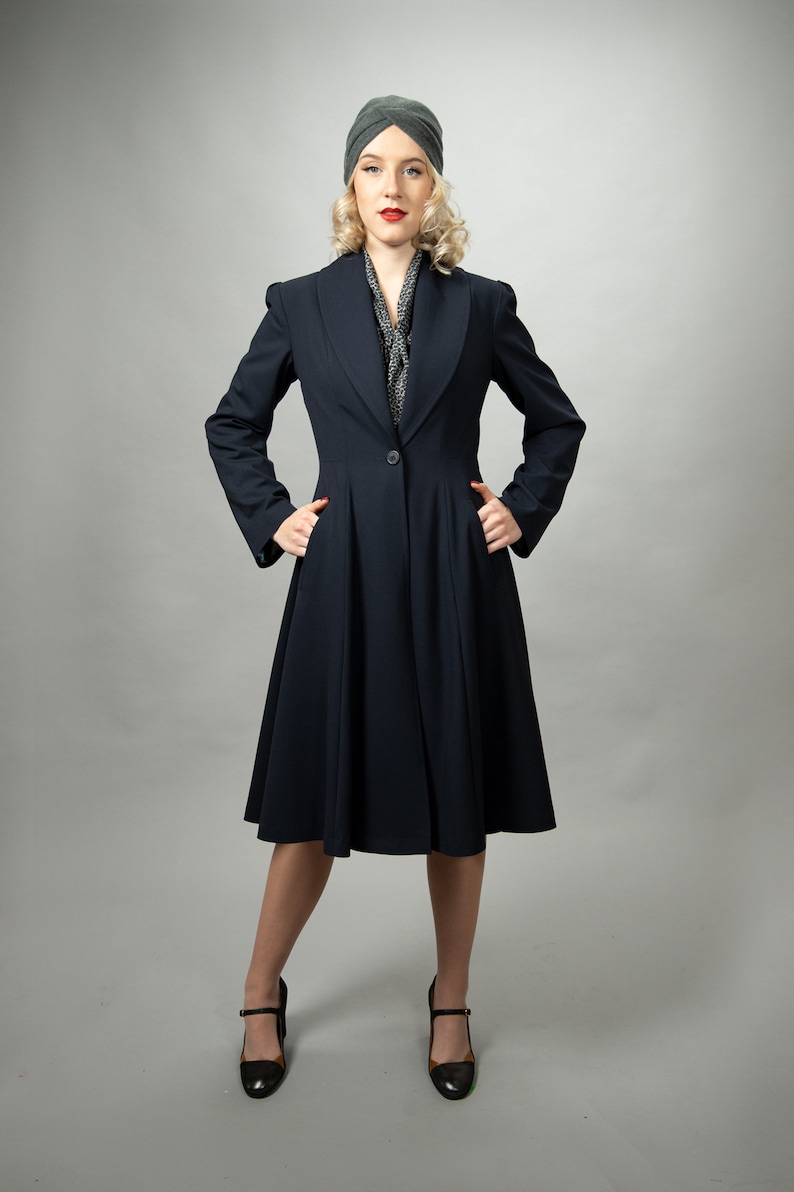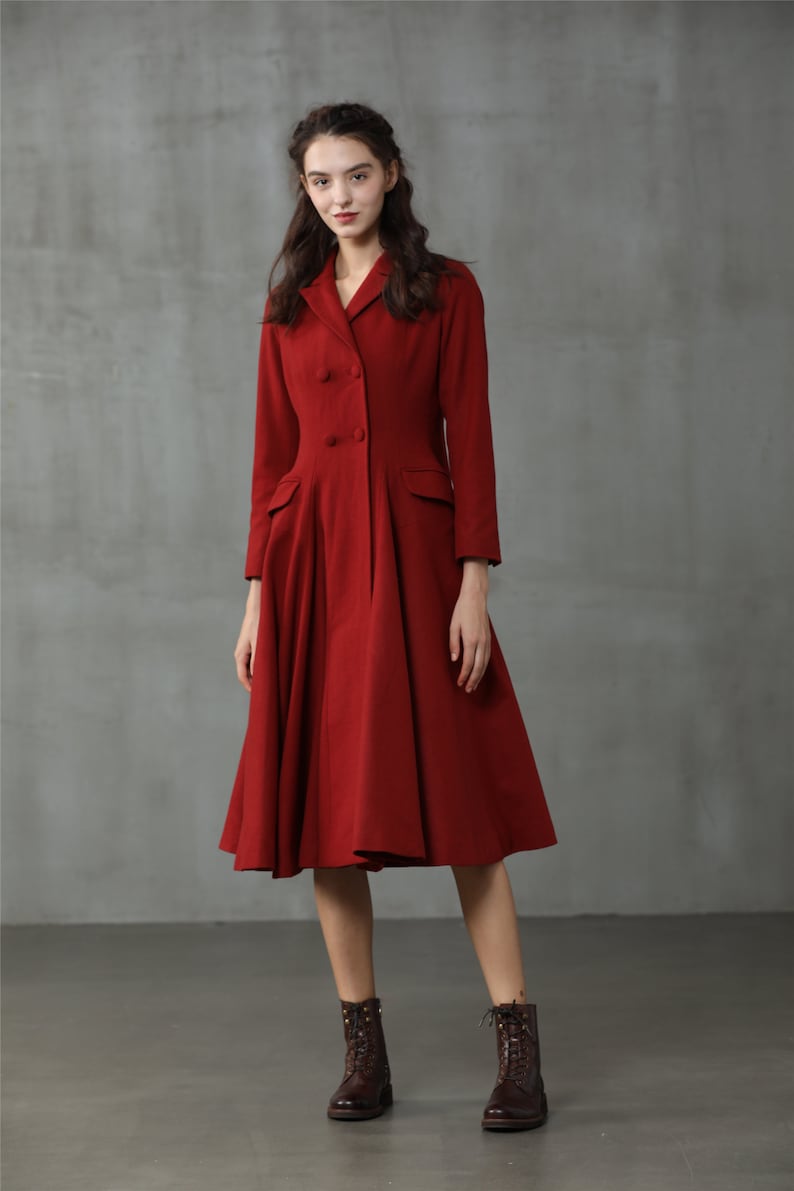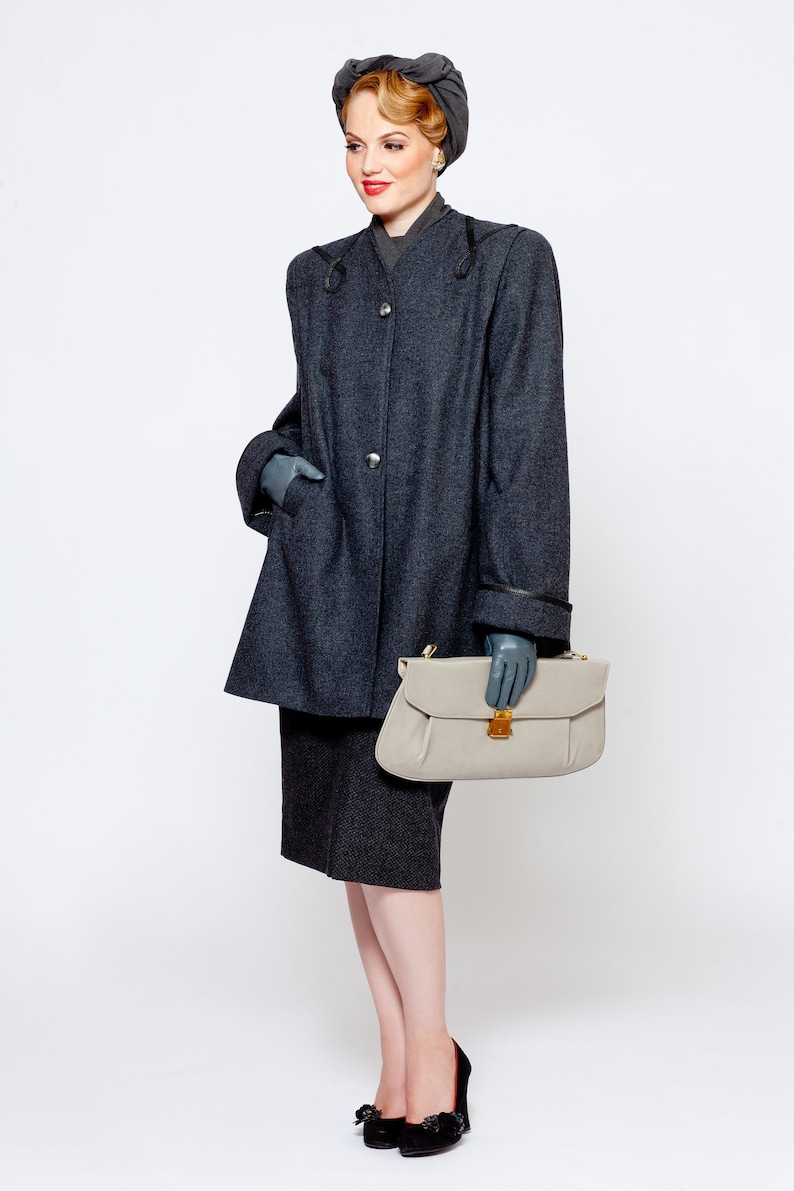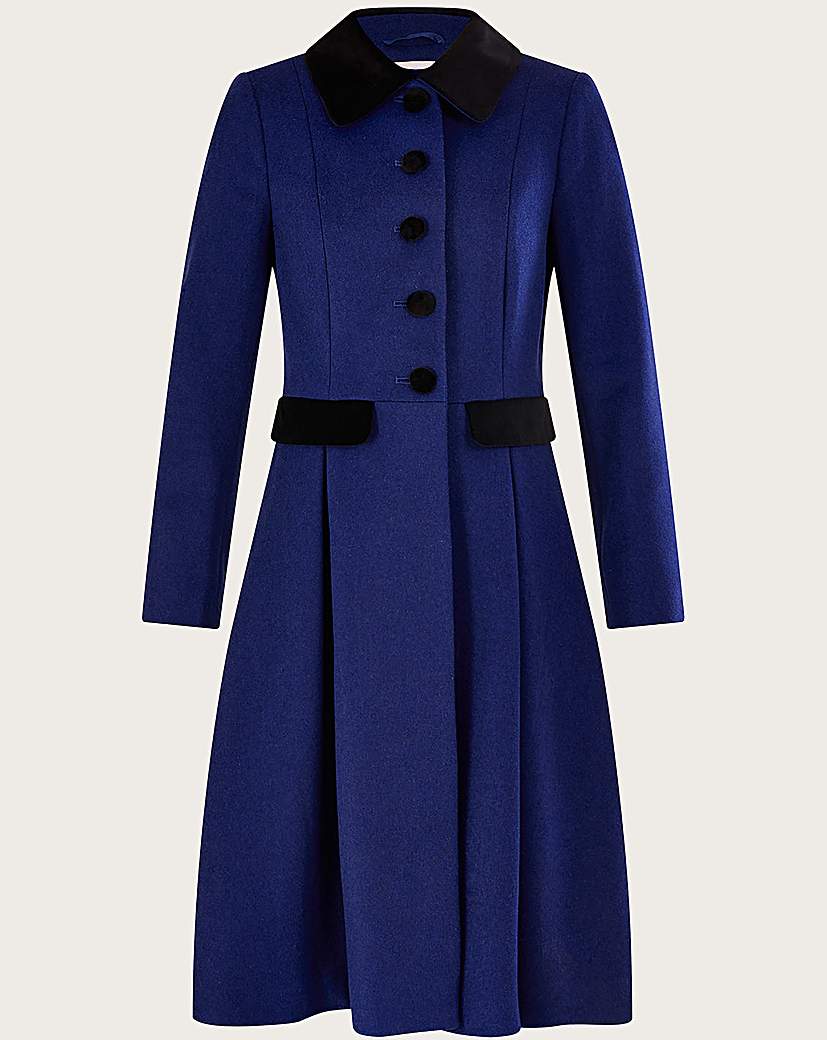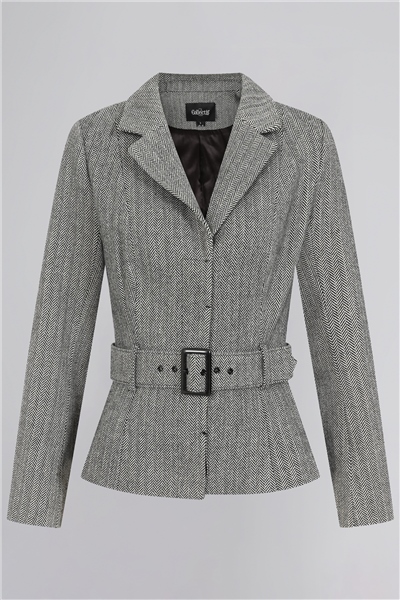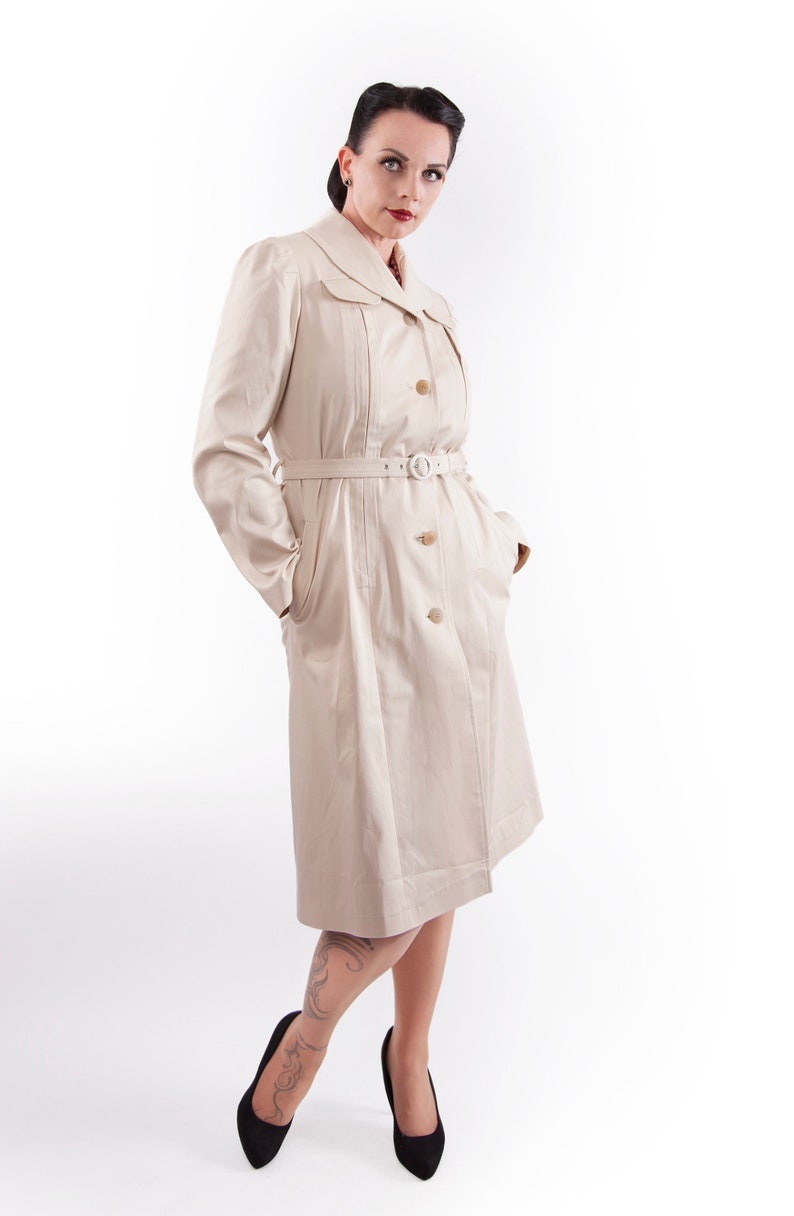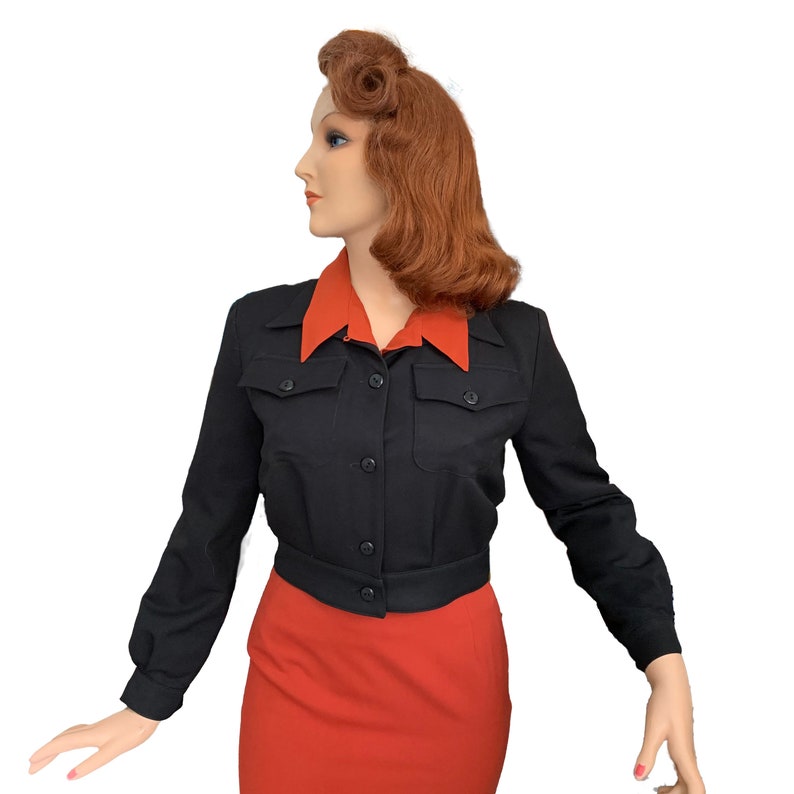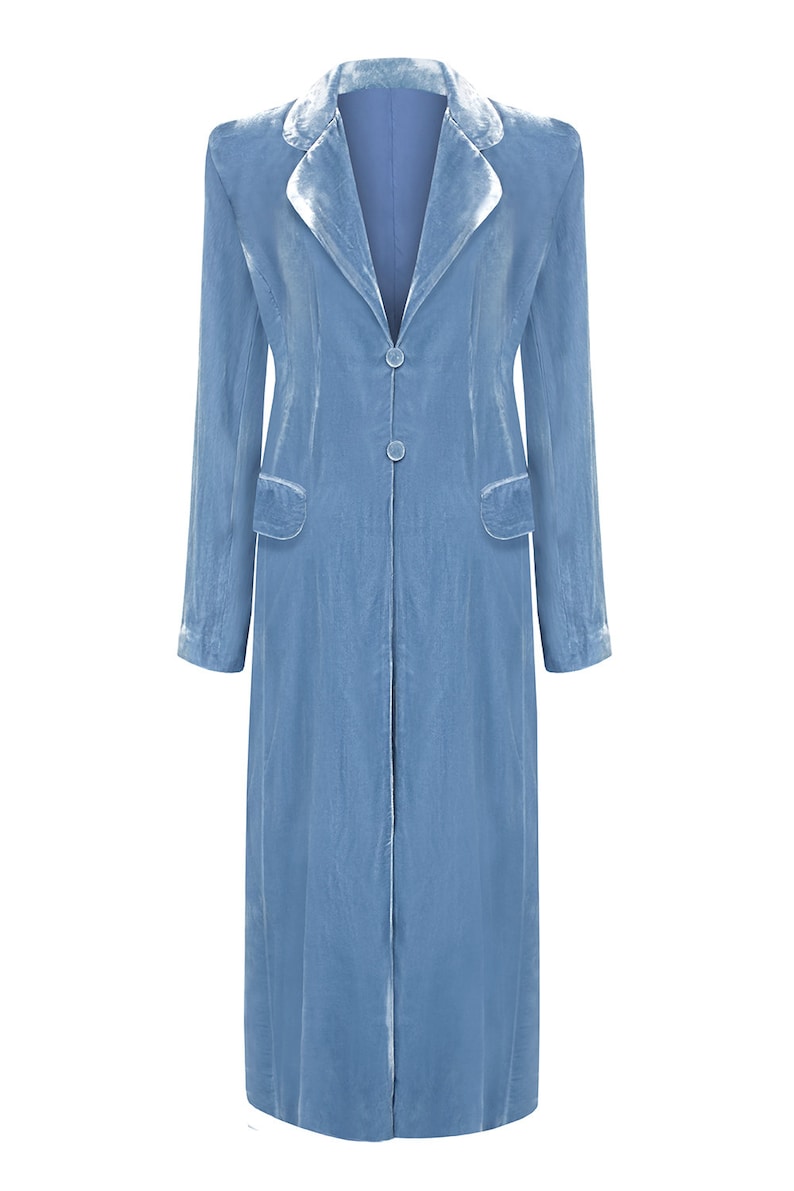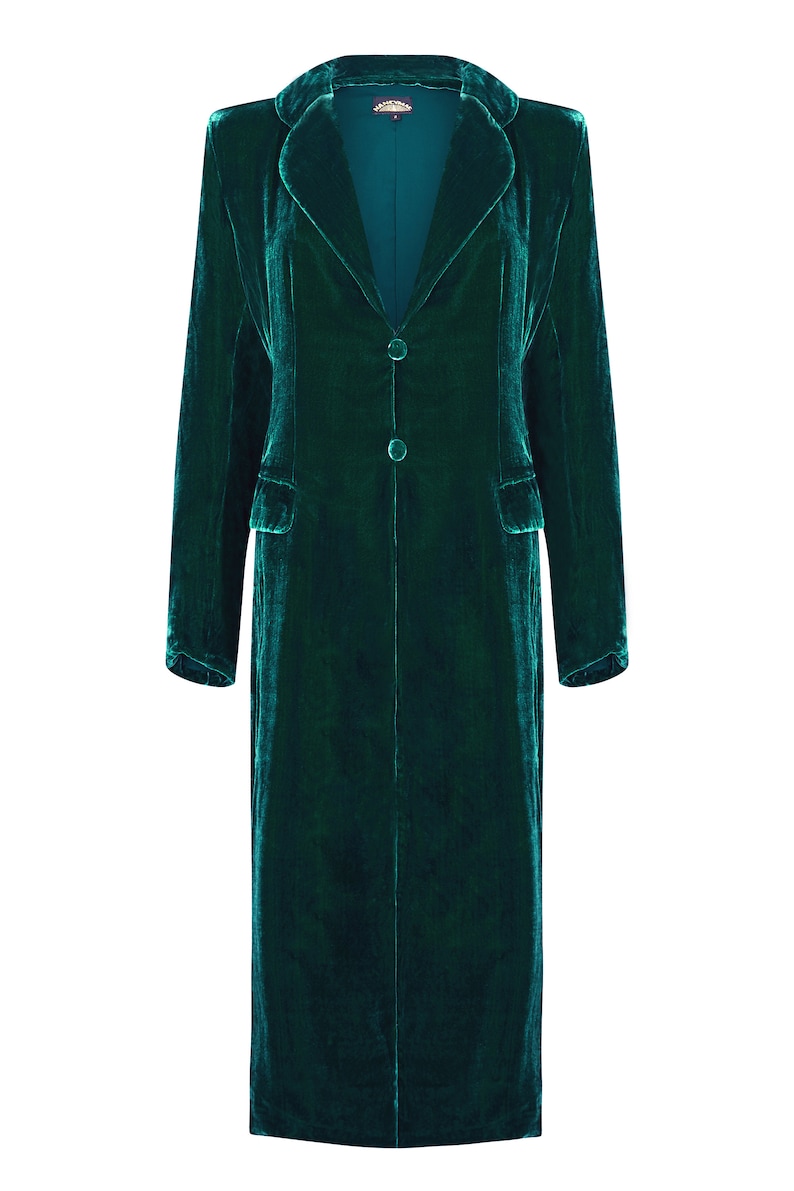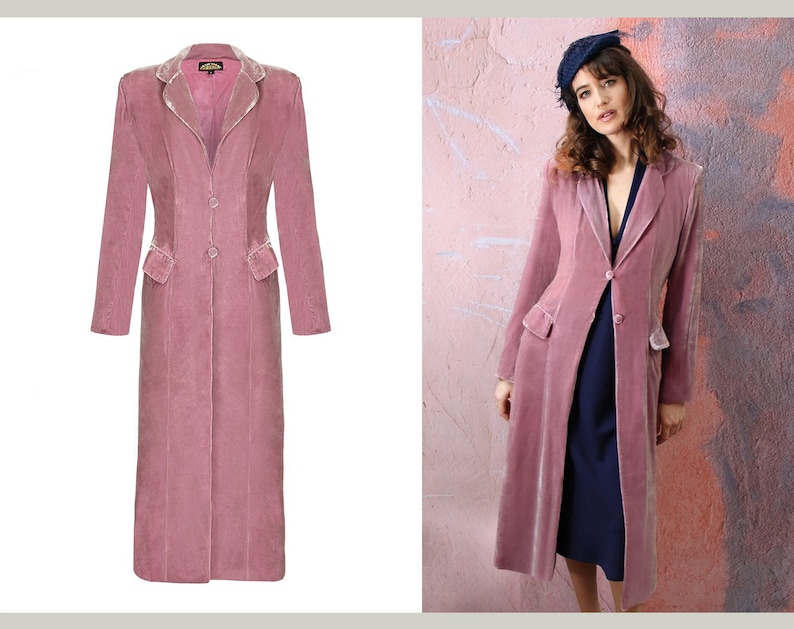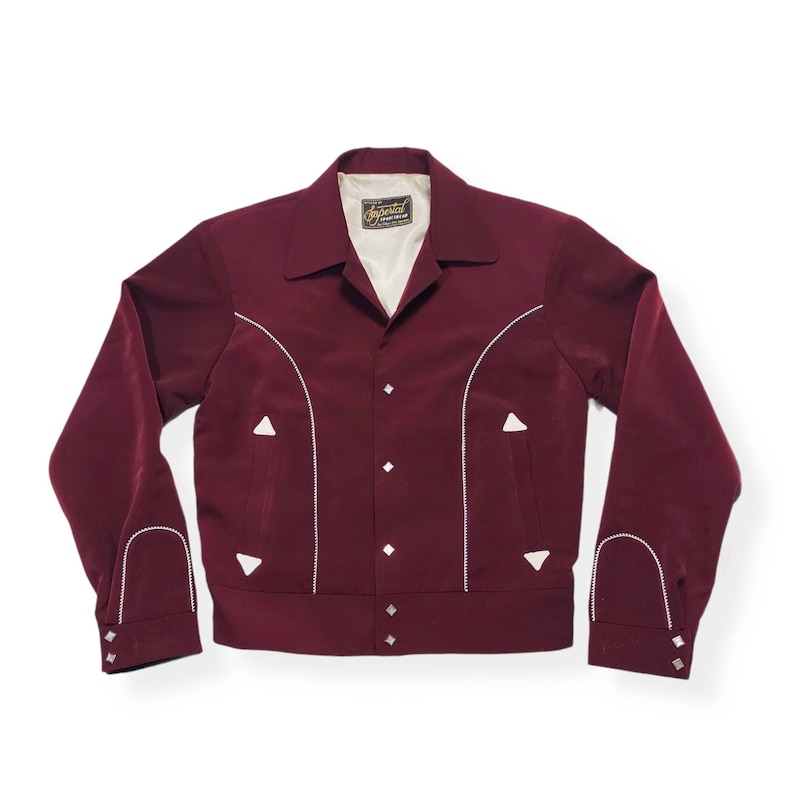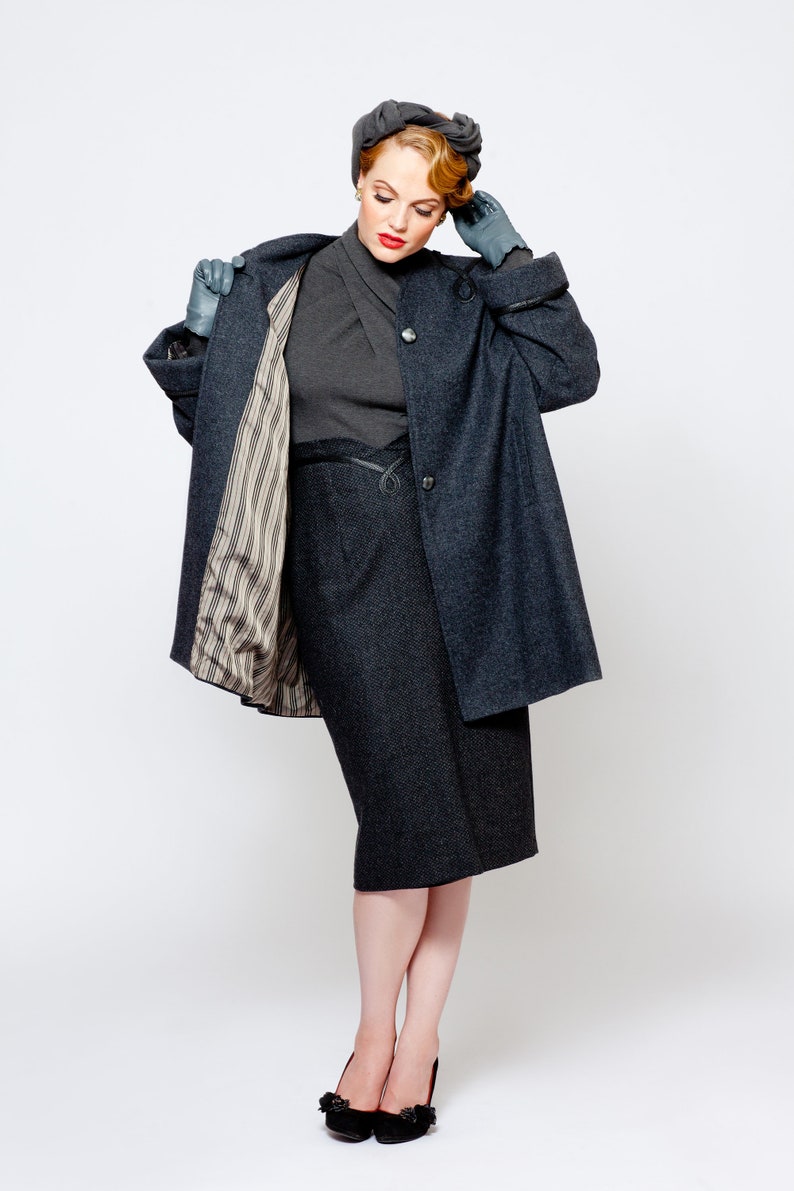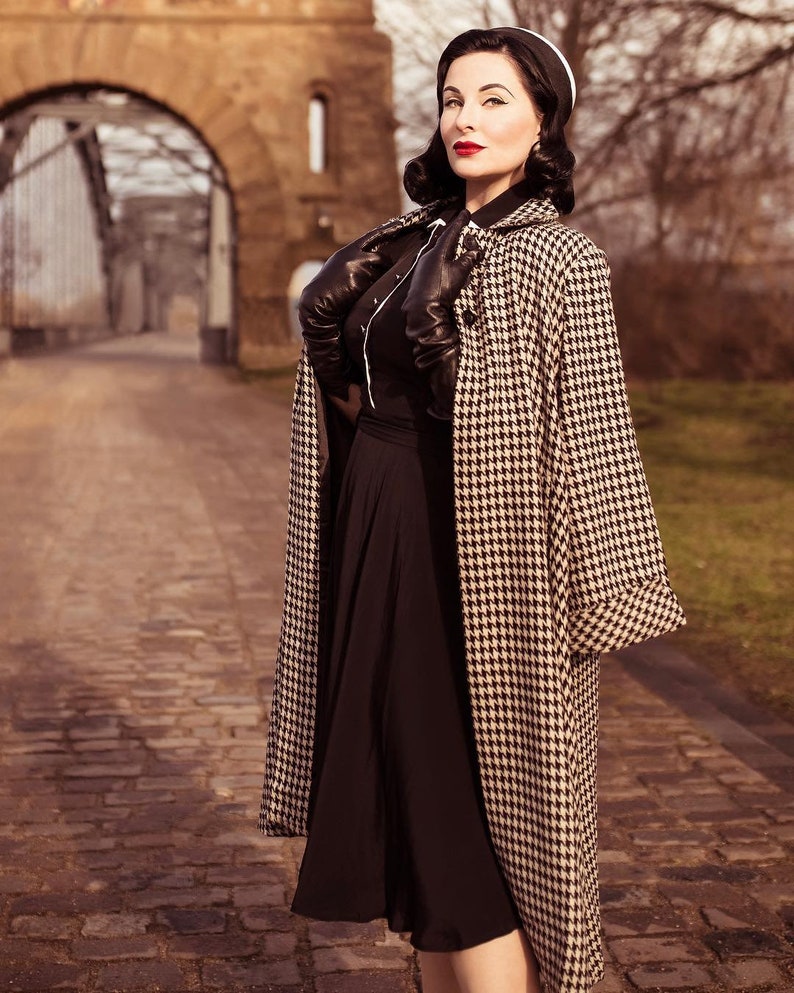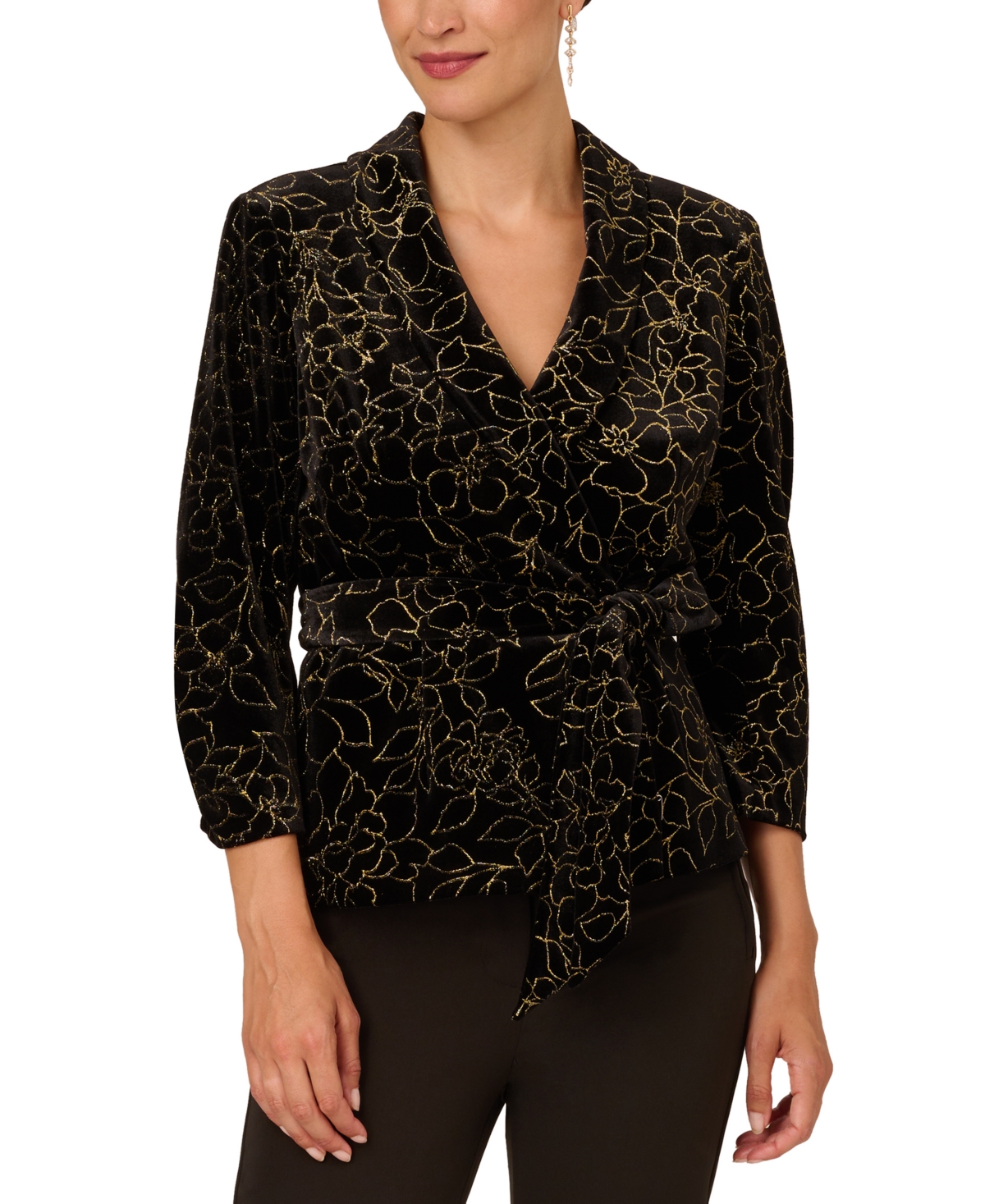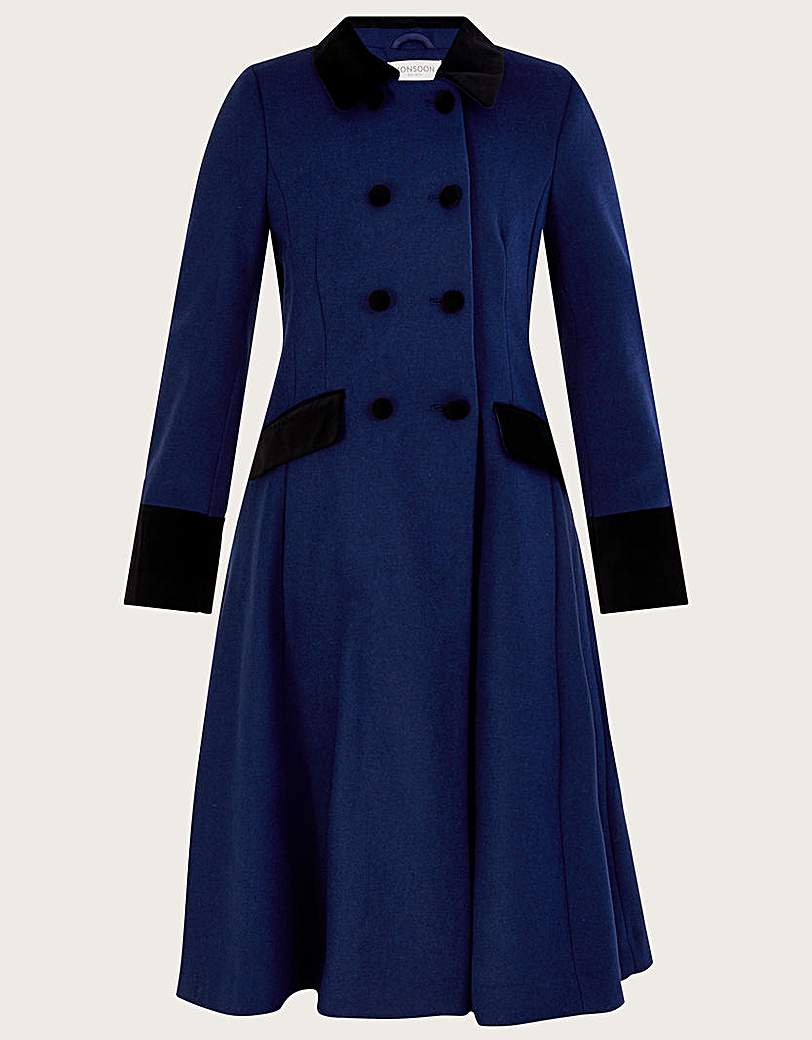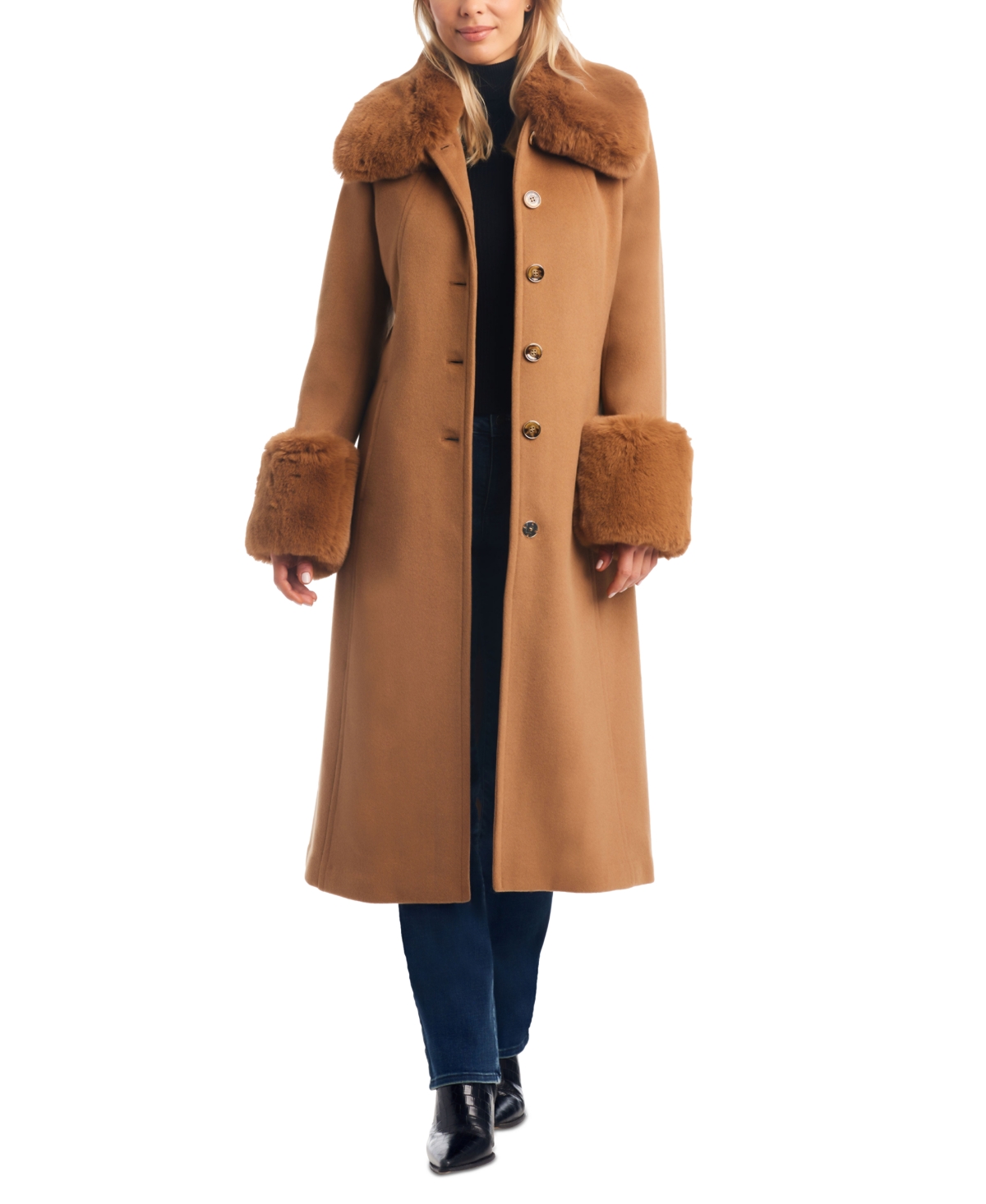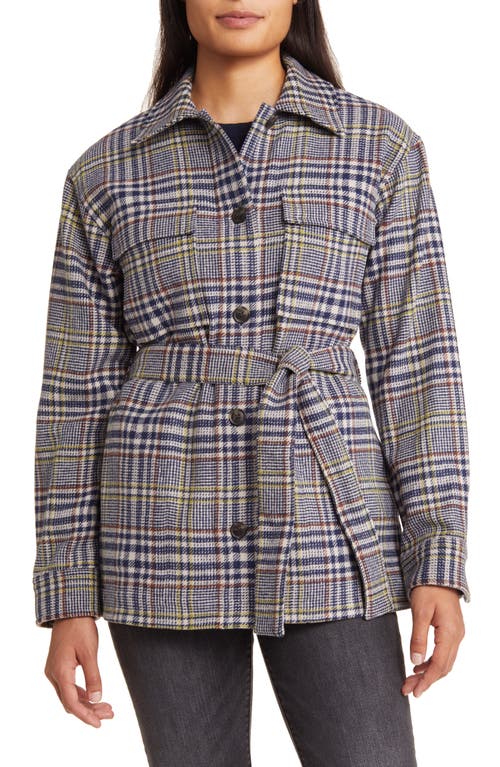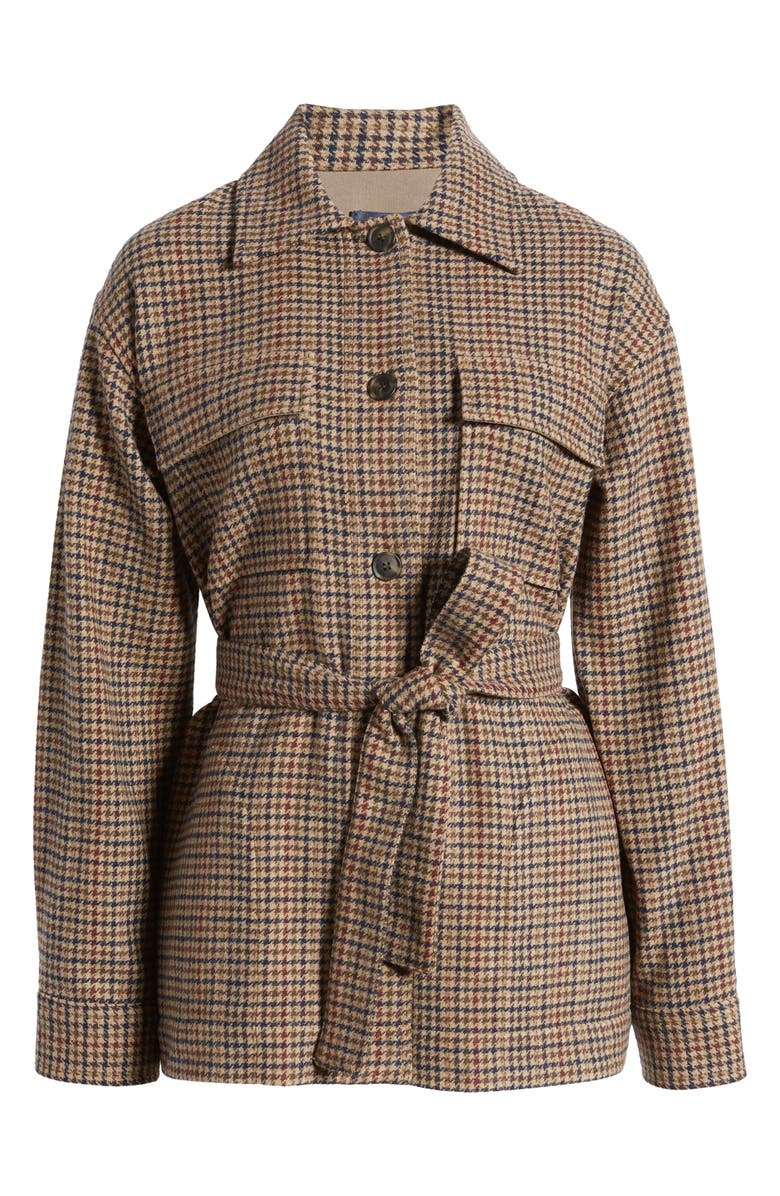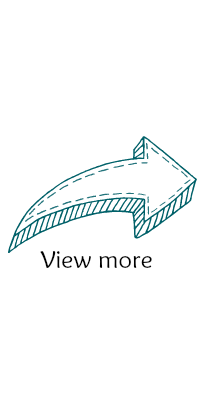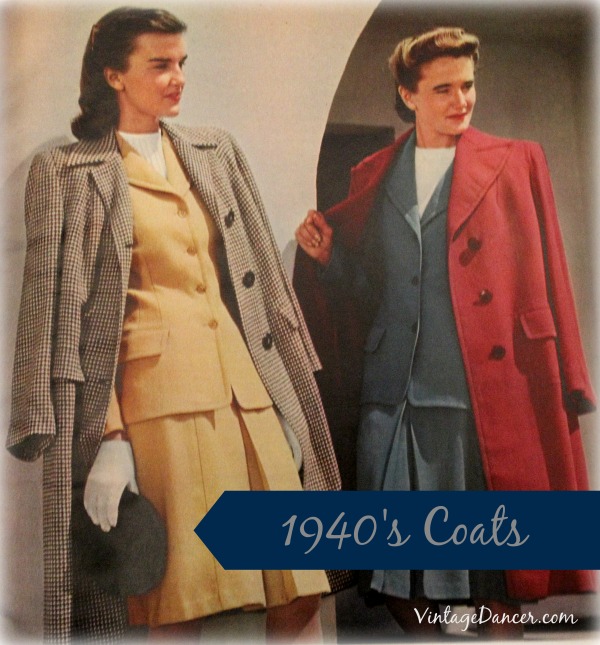
The weather turned a bit nippy this week, which always sends me to my coat closet for my best winter outerwear. I am very happy to be warm and cozy in my modern technical fabric, lightweight, wind, and water resistant snow coat except that, well, it’s not very pretty. Compared to vintage ladies’ coats from the 1920s to the 1960s, the style is anything but glamorous.
When I do get a chance to wear one of my vintage coats or vintage inspired coats, I am a happy woman! See why vintage style coats, especially women’s 1940s coats and jackets, are both practical and beautiful!
1940s Coat Styles
1940s coats during the war years were restricted by L-85, but there weren’t many rules. Coats could not have a bi-swing back, could not have more than two pockets, and had a limitation on sleeve circumference that really only eliminated exaggerated sleeve types, such as the bell shaped Dolman sleeve that was popular in the 1930s. Most coats were made from wool and rayon-wool blends, and many re-purposed wool from used coats and wool blankets.
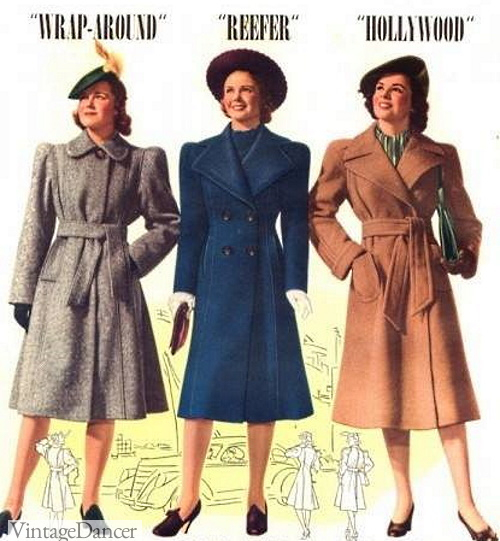
1940 coats: The Wrap, Reefer and Hollywood- three style carried over from the 1930s
Linings were made of rayon crepe or satin. Most coats followed the same basic style with a few alternatives. They were long, coming to just below the knee, and were frequently made in herringbone, tan, grey, dark green, navy, and red, among other winter colors. They were generally without decoration and all had large square shoulder pads. The look was borrowed from men’s military coats.
Trench Coats
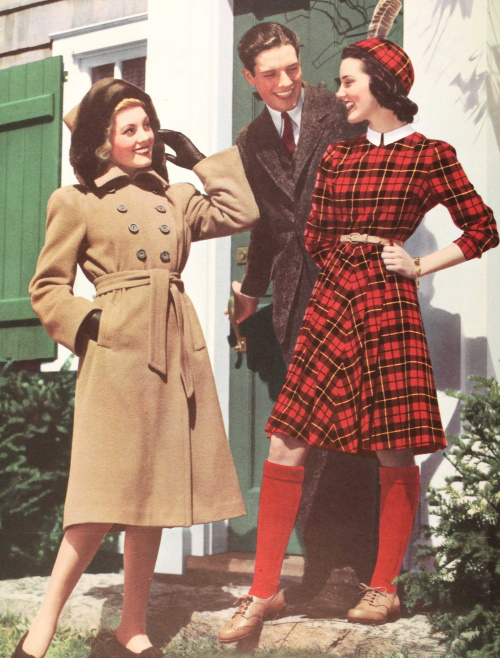
1944 double breasted trench coat with tie belt
One popular men’s and women’s style was the wool trench coat also called a wrap coat. It was somewhat loose-fitting, but not over sized. It had a wide pointed collar and one or two rows of buttons down the front. A belt about two inches thick tied or buckled at the waist. The trench usually had two slit pockets on the sides.
- 1944 blue wrap trench coat
- 1945 yellow wrap trench coat and blue belted short coat
The men’s Chesterfield coat had a female counterpart too. It had wide peak lapels with a contrasting black trim along the back neck piece and sometimes pockets. It would come in all classic men’s style coat silhouettes as long as it had black trim.
- 1943 teacher wears a Chesterfield coat in New Mexico
- 1944 red and brown Chesterfield coats
The Reefer coat was another classic coat from the 20s and 30s. It was similar to a trench coat but lacked the belt or pointed collar. Instead, it had wide peak lapels or collar, two buttons at the waist or single or double rows of buttons down the front, and an A-line skirt. The waist was pulled in through expert tailoring, always showing off an hourglass silhouette. They favored early ’40s fabric like tweed, heavy wool, and plaid patterns. It was still common during the war years, but was regarded as too old-fashioned by the mid ’40s.
- 1940 reefer coats for teens
- 1940 tweed reefer coats and a plaid swagger coat
- 1940 reefer coat and box coat
- 1945 yellow chesterfield reefer coat and teal man-ish coat
Man-ish Coats
Man tailored or boy coats made up the bulk of women’s outerwear. Like most fashion of the early 40s, men’s clothing, including overcoats were adapted to women. They had oversize lapels and collars and single row of buttons down the front. Shoulder were padded with a puff sleeve during the war and no puff after the war. Pockets were also large and buttons were statement pieces. Navy blue, sky blue, yellow, brown, hunter green, red, black were common colors. In the later years pink, burgundy and teal-blue-green were the latest fashions.
- 1945 blue coat
- 1945 green coat and suit
- 1944 navy blue coat
- 1945 man tailored brown chesterfield coat
Box Coats
One of the most iconic coat styles of the ’40s and ’50s was the polo coat or box coat. It was cut very straight and wide, in the shape of a box, and was oversized. They hung open like in the ones pictured, or buttoned closed with large, covered buttons. Box coats hung down just to the mid hip, making them good lightweight coats for fall and spring or nice evening wear when made of velvet or exotic fur. It wasn’t uncommon for a dress or suit to come with a matching box coat for a fully coordinated look.
- 1947 box coats in half lengths are better then long coats
- 1940 fur box coat
A long version of the box coat was the swagger or flare back coat. It fit wide and boxy but came down to below the thigh or knee. In the mid to late ’40s, the back of the coat often had flared swing pleats coming from the nape of the neck. This allowed extra movement and more room for clothing underneath. The front of the coat resembled most other 50s man-ish coats.
- 1948 pink flare back coat and hooded coat
- 1948 flare back plaid box coats
In warmer weather, box and swagger coats came in lighter fabrics. Made of light wool, cotton, or rayon blends, they often came with a matching skirt, but women wore them mismatched with plain skirts, house dresses, and dressy pants.
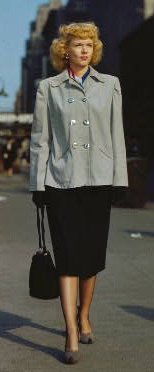
Dottie Reid wears a summer weigh check box coat in 1948
Another style of coat swagger coat in the late 40s, was slightly more fitted through the waist and flared out slightly from there. A belt strung through part of the back, leaving the pleats to hang free. It was to become the swing coat in the 1950s. The collar was pointed or oversized Peter Pan collar. This type of coat also sometimes had a fur collar, with fox (or rabbit dyed to look like fox) being the most popular. The fur collar would look like a small shawl draped over the top of the coat. Fur-trimmed coats were dressier and often had cloth-covered buttons or a cloth belt.
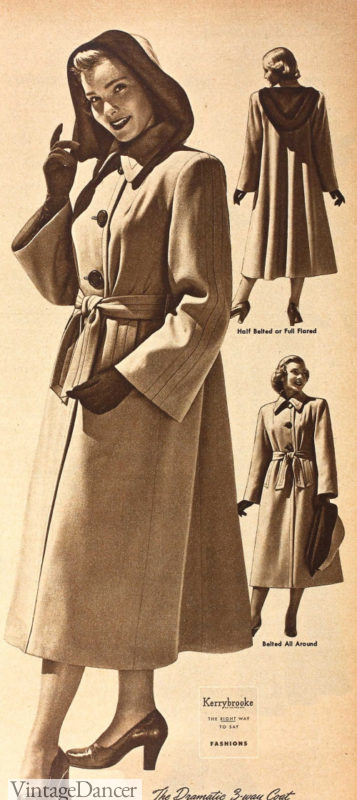
1949 swing swagger coat with belt
Fur Coats
Fur coats were worn in the same shapes as the fabric coats above. The box coat and swagger style looked best with a thick fox, sable, or seal fur. Sleeves were wide and open and collars were high and closed with a longer hair fur piece trimming the collar. To keep with the simple and polished style, of fur coats only had two or three buttons or clasps to keep the coat closed. Some box styles only had a single clasp at the neckline. Pockets were hidden slashes on the coat sides. The beauty of the fur must be the showcase of a woman’s 1940s coat!
- 1943 Persian lamb coat
- 1946 fur coat
Fur stoles were also used to accent winter wool coats. They could be large round or square collars, or long wraps like a scarf. For the rich, an entire animal was worn draped across the shoulders, complete with head and feet. This was largely out of style in the frugal ’40s. Women who wore them kept them from the ’30s, and only worn them in the cities or to fancy occasions.
- Early 1940s animal fur stole and matching bag
- 1948 long fur stole
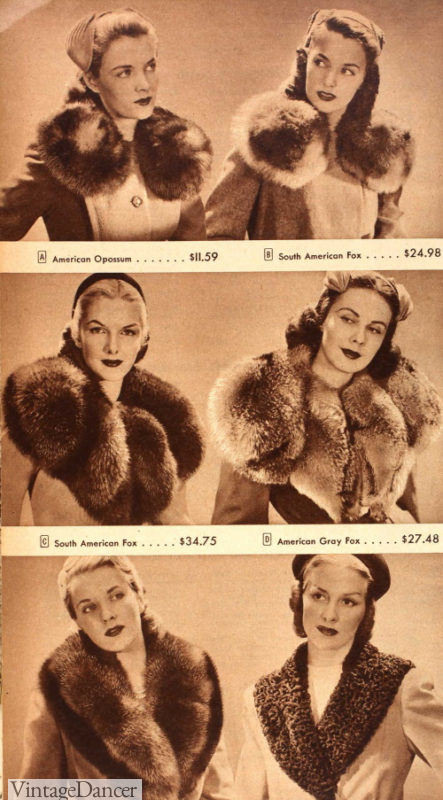
1944 fur collars
1940s Raincoats
New inventions during and after the war led to new treatments for waterproofing fabrics. However, most 1940s raincoats were made of cotton Gabardine. They were mostly turned into rain capes or simple utility coats with padded shoulders, wide lapels and collars, and big belts forming the typical masculine/military shape. Hemlines rose to just below the knee (their legs must have always been cold and wet) and colors dulled down into drab military hues. What is remarkable about the 1940s is the new coat styles that emerged during the decade have stayed with us ever since.
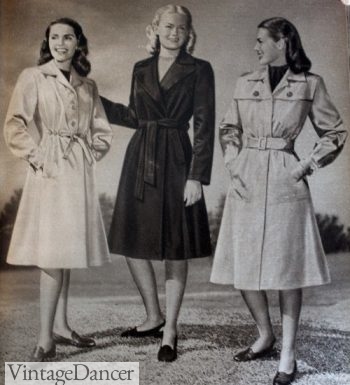
1940s raincoat; (middle) wrap coat in black, (R) trench coat, (L) semi trench box coat
The utility coat or shop coat was a practical but not too pretty raincoat. The trench coat was the newest style and one that is a still a classic today. The wrap coat was the most feminine design. Read more about vintage raincoats.
- 1943 rain coat/poncho
- 1946 belted rain coats
1940s umbrellas were a necessary rain accessory that came in bold patterns. Brown, red, navy, black, wine, green plaids were the most common. Printed patterns on rayon or oil silk were the most rainproof. Most umbrellas came with a C-curved or knob bakelite handle in wood tones. Cheaper umbrellas had wood handles.
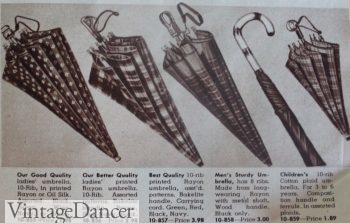
1940s plaid umbrellas
1940s Casual Jackets
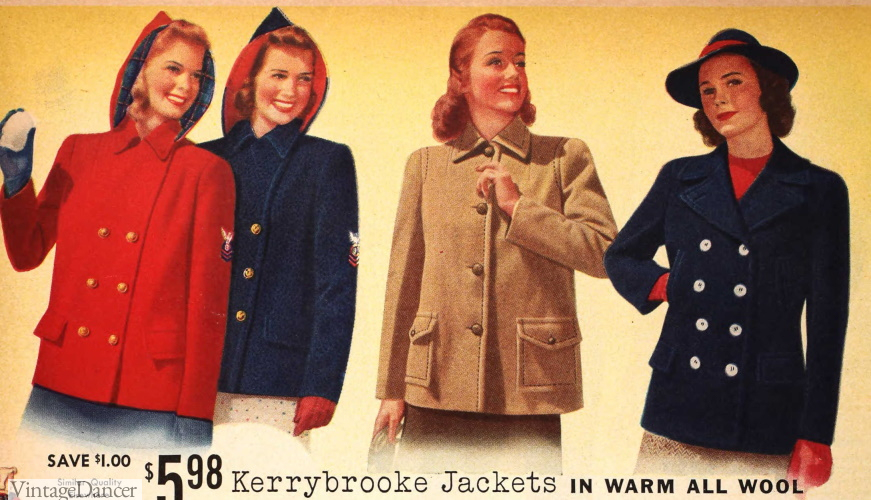
1941 shortie coats- boxy coats and pea coat style
While long coats were best for staying warm in dresses and looking presentable, there were also outerwear choices for casual looks. The casual jacket looked a lot like jackets that came with women’s 2 piece suits. In fact, many women wore them interchangeably. The sports jacket was a man-tailored blazer that fell just over the hips. It had padded shoulders, notch lapels, 3 center buttons and two large front flap pockets. It paired well with white blouses, skirts, and trousers.
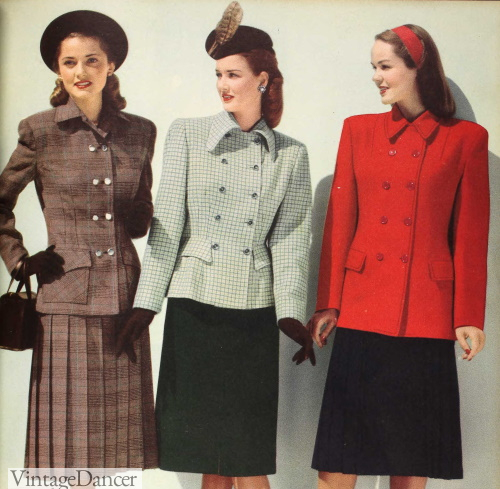
1947 tailored jackets and skirts for fall
Winter varieties were made of wool in large plaid, check, or solid colors. Wearing a solid jacket with a plaid skirt or plaid jacket with the solid skirt was a very popular combination for most of the decade.
- 1940 wool blazers/sportcoats
- 1941 Mackinaw belted plaid jackets
Plaid work shirts worn over pants, jeans, and overalls was an all too common look for teens, working Rosies, and Land Army girls. They were thick jacket-like men’s style shirts, worn untucked and layered over knitwear.
- Plaid work-shirt worn like jackets
- 1947 plaid work-shirt
Summer jacket varieties usually matched summer weight cotton and linen pantsuits, shorts and other casual clothes. The striped blazer was especially becoming in summer, giving a nod back to men’s boater jackets worn at the turn of the century.
There was also the utility coat made of suede or fleece and the collarless knit jersey, which was a combination sweater and jacket. Sweaters made excellent spring and summer jacket alternatives.
- 1944 casual jackets in box, utility, sweater and blazer styles
- 1947 solid and striped blazer-jackets
Other casual jackets took on the shape of long overcoats but were cropped to hip level. The box coat became a casual style when made of textured fleece or chenille. These “jackettes” looked a lot like bed jackets!
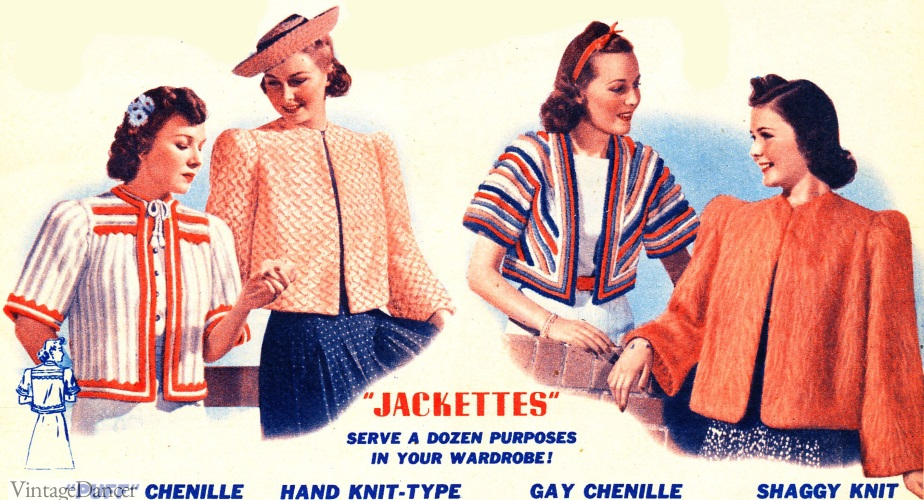
1941 Jackettes made of textured chenille and knits
Winter Sport Jackets
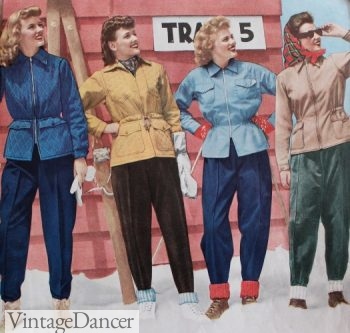
1943 winter ski jackets
Women who enjoyed outdoor snow sports like skiing or who lived in very cold and wet climates would have turned to a sports jacket for their everyday wear. Similar to ski clothing in the 1930s, women’s sport jackets were short in length with a zip up or button up closure and a pulled in waist, often with the help of a drawstring belt or gathered elastic sides. Quilted versions allowed multiple layers of warm fabric to be stitched together without much bulk. The outer fabric was made from a water and wind resistant cotton twill or gaberdine. Heavy wool could also be used — after all, it was naturally water repellent. Bright colors were the most visible on the ski slopes, although natural tans and browns were worn too, especially at home.
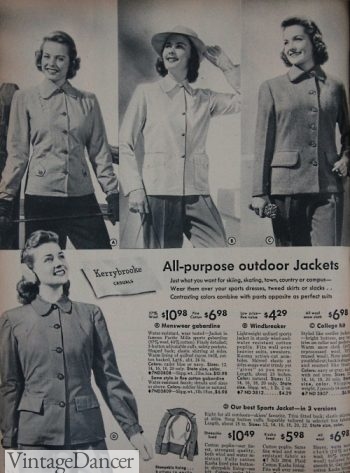
1940s Outdoor Jackets
Waterproof outdoor coats like these above were similar to ski jackets yet without the tight waist. They hung boxy with high collars and large flap pockets. Made of gabardine, they mimicked the men’s casual jacket but with a slight taper at the waist and a more feminine cut collar. Some were light windbreakers, others were rugged with a sherpa, wool, or cotton flannel lining.
Other casual mens jackets were adapted for women such as a leather, plaid wool or gaberdine bomber jacket. These had an ribbed knit waist and cuffs with fold out collar and two side pockets. The plaid shirt-jacket or gaberdine zip up shirt jacket, aka “gab” jacket, were also made for women. Like mostly casual wear they were geared for working outdoors.
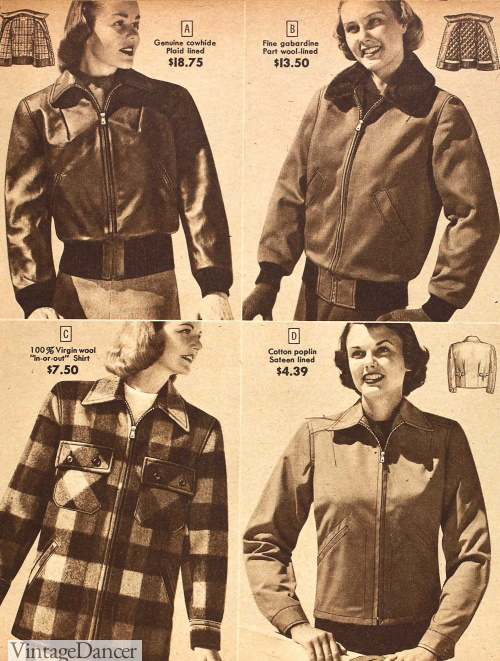
1948 bomber, gaberdine, shirt-jacket and cotton zip jacket- all styles taken from menswear
The final outdoor casual jacket worn by women in the early 1940s was the all-leather jacket. Lightly lined and short, with a tapered waist or belt, they were a nice final layer over a warm sweater or knit top. They were casual yet stylish enough to be worn with skirts or trousers. Most colors were natural medium or dark brown, but green suede and chamois red or tan were also options. The leather jacket was another carryover style form the ’30s that quickly disappeared for most of the ’40s. They returned again in the 1950s in bright colors and shorter lengths.
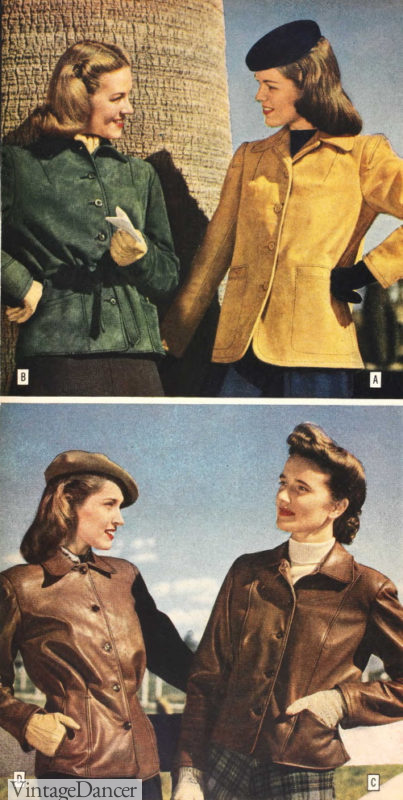
1943 colored suede and leather jackets
- 1946 leather jackets
- 1946 Suede jacket (love the western fringe on the green)
Keep learning. Read about the next wave of outerwear in the 1950s here.
